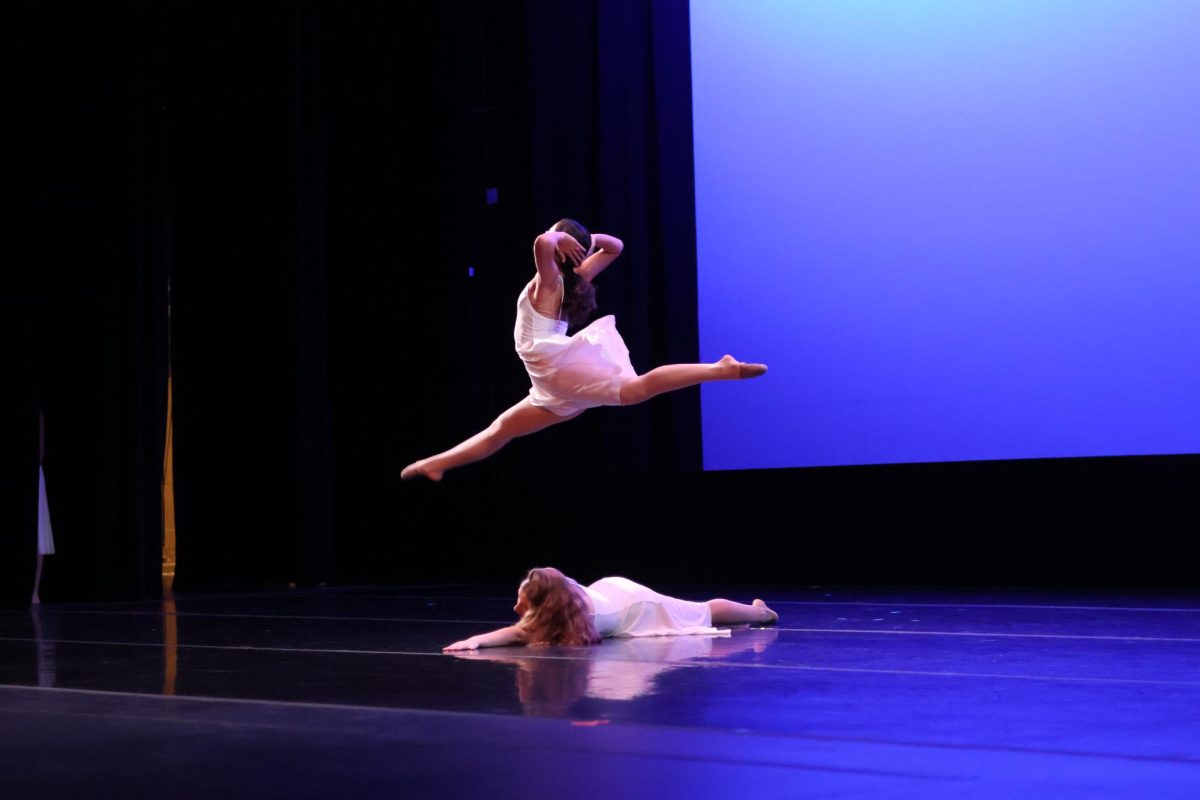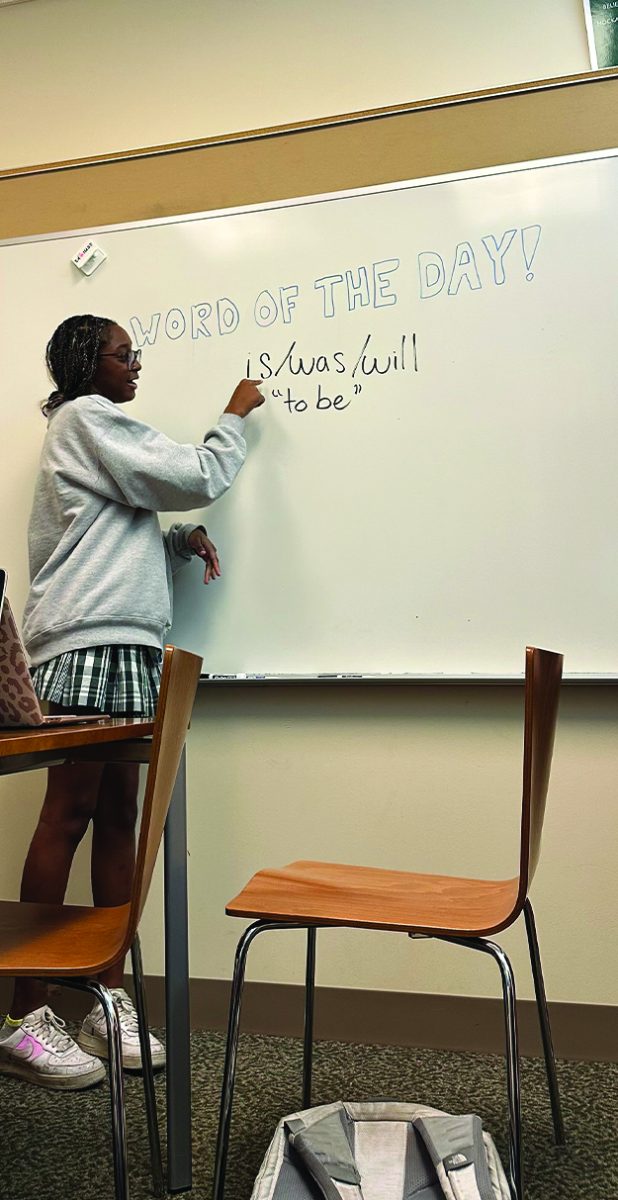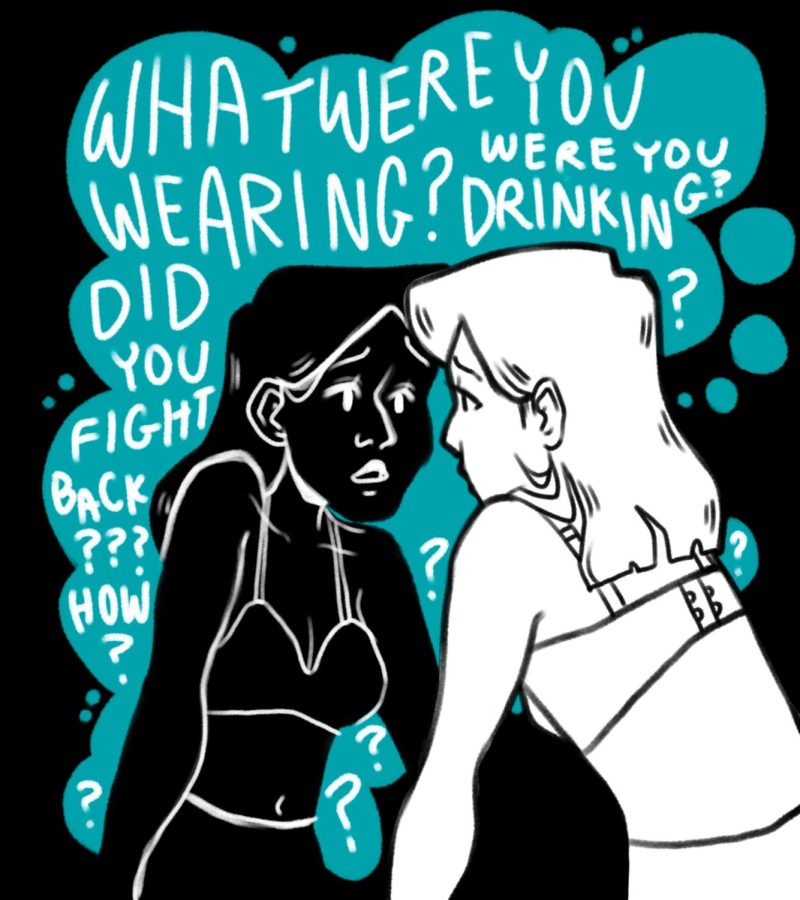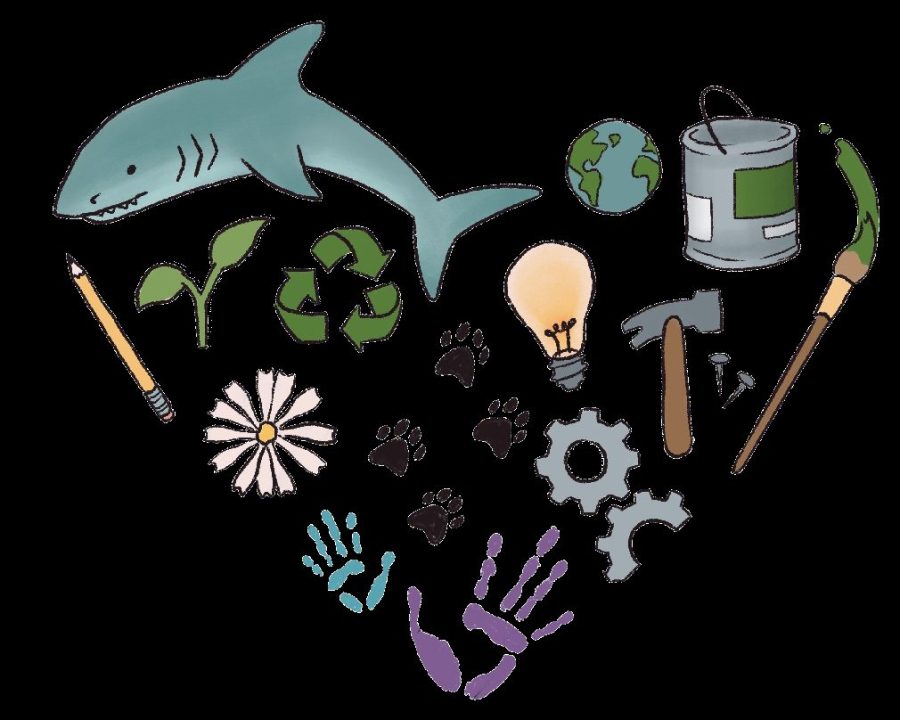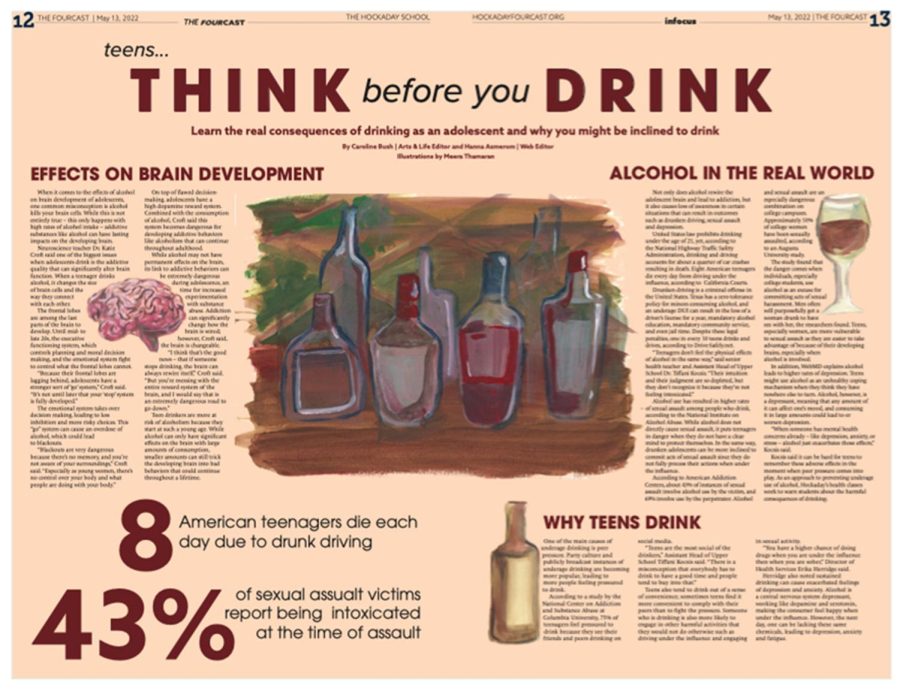Junior Abby Fuller carefully knots her blue sneakers. Swaddled in workout gear, she grabs her iPhone and earbuds to pass the time during her run before kicking open the front door.
She opts to stream the “Serial” podcast instead of popping in her usual Top 40 US Hits playlist. As Fuller’s feet hit concrete, podcast host Sarah Koenig carefully unspools a tale of the reinvestigation into the 1999 murder of Hae Min Lee, discussing ambiguous alibis and dusty evidence and everything in between.
“Serial,” which covers Lee’s death and the accusation of her boyfriend for the crime, has garnered over 80 million downloads on iTunes and captivated listeners around the world. Fuller is among them.
“I don’t usually listen to a lot of podcasts,” she said. “I thought they were kind of an old-people thing. ‘Serial’ is the only podcast I listen to.”
She describes it as “addictive” and an “obsession.” Indeed, Fuller listens to it in car rides to school, during runs, on road trips, even while showering. “It’s incredibly engaging, and it makes you think a lot. It’s why I like it way more than just listening to music,” she said.
“Serial” belongs to a recent renaissance of true-crime media, a genre detailing real-life crimes and an entertainment realm rising in popularity that Fuller is not alone in pursuing.
According to a recent student survey, approximately 60 percent of upper school students regularly view true-crime media. Though a quarter of this 60 percent follow “Serial,” other true-crime series have gained similar mass followings.
“Making a Murderer,” which covers Wisconsin man Steven Avery serving 18 years for a flawed murder conviction, attracted one in five adult television viewers 10 days after its Netflix premiere on Dec. 18, according to metrics company Symphony Advanced Media. Similarly, the finale of “The Jinx,” a docuseries following wealthy accused murderer Robert Durst, racked up more than 1,258,000 viewers in the weekend of its Feb. 8 premiere.
Speaking even more to these entertainment successes, more and more networks are spawning true-crime TV shows for fanatics, including NBC’s “Law & Order: True Crime” and an unnamed CBS true-crime project to be released this fall.
Why now?
Despite recent popularity, the true-crime genre has long floundered in latency.
Michael Arntfield, formerly a 15-year police detective and now a University of Western Ontario professor of literary criminology, has long partaken in the true crime field, observing both the ups and downs of the genre’s media. After founding Cold Case Society, a group of university students that analyze data related to cold cases, Arntfield began hosting “To Catch a Killer” in 2014, a TV show hosted by Oprah Winfrey Network that delves more deeply into the group’s investigations.
Though he believes there’s always been a viable market for true-crime, the genre lacked interest for many years. “It wasn’t really considered quality literature. It was largely relegated to print media: books, mainly paperbacks,” Arntfield said.
Then, what gives for the sudden, unprecedented rise of the field? Arntfield and Fuller both attribute it to technology and structure as key.
“Serial,” “Making a Murderer” and “Jinx” all follow a longform narrative format, in which they pursue a single story over multiple episodes. It’s a far cry from what Arntfield describes as “‘Dateline’-type stories that were just open-shut, 44-minute or half-hour news stories.”
Because of this keen focus, creators can present information relevant to the case, then leave the story open-ended for the audience to decide instead of providing a definite resolution.
“The constant possibility of wrongful conviction in ‘Serial’ is so investing to listen to,” Fuller said. “It’s composed really well, so you’re left on the edge of your seat basically waiting for the next hour-long episode.”
Arntfield also cites the development of social media, which provides audiences with vast discussion space, as key to true crime’s recent boom.
“[There’s] a way to expand the story on social media such that readers, watchers and listeners were actual stakeholders in the system, not just passive consumers. They feel they’re a part of the case – they want to unpack it, they want to discuss it, it becomes very much its own culture in a way,” Arntfield said.
Effects on the Courtroom
Because of viewer involvement and a tendency to leave cases open-ended, true-crime stories have provoked audiences to mobilize opinion both socially and legally.
Nearly half a million people signed a 2016 petition requesting an executive pardon for “Making a Murderer”’s Steven Avery, eliciting an explanation from the White House that the president cannot pardon those convicted of state crimes.
Todd Clement, a Dallas attorney for victim Lucas McConnell in the notorious Ethan Couch “affluenza” case in Burleson, Texas, emphasizes that unified public opinion, swayed by true-crime TV or media coverage, can play an extensive role in the courtroom itself.
“Think about it this way: judges are all elected officials. Folks wants to be reelected. Obviously, the simple way for them to garner public favor is to follow the public outcry and act accordingly,” Clement said.
Upper School history teacher Tracy Walder, who served in both the F.B.I. and C.I.A., is divided on whether or not this mobilization of public opinion is beneficial or detrimental. No matter the situation, she values free-speech rights.
“But the law enforcement person inside me wants to say no. I have faith in our system, that it is good and that there is a lot of evidence that has to come in order to secure a conviction,” Walder said.
True-crime television may also transform juror expectations for trial innerworkings, good or bad. “I think people walk into the courtroom, especially jurors, expecting to see one of their favorite TV programs, expecting it to be that exciting or be that interesting,” Clement said. “Frankly, justice is not nearly that exciting or interesting most of the time.”
This link between public opinion and trial decisions, of course, can prove both positive or negative for actual justice. Critics point towards the “CSI Effect” in the 2000s, which showed a link between crime show “CSI” viewership and a greater-than-usual emphasis on forensic evidence.
Trial consultant Jo-Ellan Dimitrius, who has selected juries in multiple trials, predicted to Vulture that potential jurors’ knowledge of “Making a Murderer” would be a significant limiting factor for their jury service. “We used to ask those questions about CSI because it was pretty predictive of someone who was a defense-prone juror,” she said.
On the other hand, some emphasize true-crime journalism and media as important in bringing completely cold cases to the courtroom in the first place.
According the Economist, more than 211,000 homicides committed since 1980 remain unsolved – a body count greater than the population of Des Moines, Iowa. “The numbers are staggering. All these stories are worth telling,” Arntfield said.
Arntfield also notes the common inability for government officials to pursue these untied cases.
“Law enforcement doesn’t have the resources, and very few police departments actually have a dedicated cold case unit,” Arntfield said. “To generate tips and to get these stories out under the public and to put pressure onto police and witnesses to come forward, I think the media is the future.”
An Ethical Standpoint
Shortly after “Serial” catapulted Hae Min Lee’s murder to the spotlight, Lee’s younger brother took to online forum Reddit under a verified identity to express his feelings about the podcast.
“TO ME, IT’S REAL LIFE. To you listeners, it’s another murder mystery, crime drama, another episode of CSI,” he wrote. “You weren’t there to see your mom crying every night, having a heart-attack when she got the news that the body was found. You don’t know what we went through.”
In fact, the family of “Serial”’s Lee, as well as “Making a Murderer” victims Penny Bernsteen and the Halbachs, all declined to participate in the true-crime media coverage of their personal tragedies.
Despite protesting from involvement, the Halbachs and Bernsteen are still featured in nearly every episode, through old photographs and video clips. The producers did not notify the Halbachs or Bernsteen that these parts of their lives would be used.
“I don’t mind looking at it, but my children should not have to relive that,” Bernsteed said to New Yorker. “And everything we’re dealing with, the Halbachs are dealing with a thousandfold.”
For many, this raised the question – is true-crime media even ethical?
In the middle of “Making a Murderer,” audiences hear a “Dateline” producer discuss murder victim Teresa Halbach: “This is the perfect ‘Dateline’ story. It’s a story with a twist, it grabs people’s attention. . . . Right now murder is hot, that’s what everyone wants and we’re trying to beat out the other networks to get that perfect murder story,” the producer said.
“Making a Murderer” creators intended for this clip to show how exploitive old, conventional true-crime shows were, and to exclude “Making a Murderer” from this description because of its more intellectual slant. However, despite any possible intentions otherwise, “Making a Murderer” inevitably turns private tragedies into public entertainment, whether good or bad.
Arntfield echoes that indeed recent true-crime has progressed far from the garish, exploitive genre it used to be. “But there will always be people, whether it’s direct family members or whether it’s just people just living in the communities or even the police, who don’t agree with the storytelling format or don’t want the past dug up,” Arntfield said.
However, many see other issues with “Serial” and “Making a Murderer,” namely a bias towards one side. Avery’s prosecutor, Ken Kratz, cites “Making a Murderer” as leaving out several crucial facts for the pro-conviction of Avery standpoint, which many Internet users also noted online.
“Every one of these programs come with an editorial component. And what I mean by that is, somebody figured out what they wanted to say and then they assembled the evidence to basically compel the viewers to feel accordingly. Real world doesn’t operate that well,” Clement said.
According to Walder, this bias may not always be readily apparent, which leads to possible damage. “I don’t think Americans are smart enough to realize that there’s a bias,” Walder said. “I do, most Hockaday students do, because we’re smart girls, but I don’t know that the population as a whole sees the bias.”
For Arntfield, a previous investigator, the main issue with “Serial” is the case the producers chose to focus on, as thousands of other cold cases wait unanswered. “They made a lot of trouble and went through a lot of work to muddy the waters in a case that was pretty straightforward,” Arntfield said.
Should media still cover real-life cases?
Despite the genre’s issues, Clement believes it’s always beneficial when people involve themselves more in their communities and in the justice system. Fuller reflects that.
“I know after listening to a lot of these, I’m more interested in criminal justice and being informed about how that works. At least being informed and finding out the truth and talking to more people about it would be a way to take action,” Fuller said.
The reasons behind audience’s involvement, however, still bother Clement. According to him, they only take interest because of the editorial bias of the media series. “That is not necessarily the best action from time to time unless you have the full picture of the entire case,” he said.
Walder believes that even if true-crime media continues to publish, she may not listen.
“Part of why is because I think it’s almost offensive. To me, I’m thinking about the victims. What does it do to the families of these victims? It reopens all of that to them. That would be my main hesitancy,” Walder said.
From a cold case standpoint, however, Arntfield views investigative journalism as crucial in resolving unsolved stories and gaining justice for these families.
“Closing or remedying justice will always be something that strikes a chord with the public, whether that’s wrongful convictions or cold cases,” Arntfield said. “In most cases, it’s 10, 20, 30, years later and there’s no chance to solve [the case]. It just compounds the tragedy, and the media coverage is one way to lessen it.”
Jenny Zhu – Editor-in-Chief



